Our recommendation for the best free email provider is Gmail because it’s easy to use, offers flexible organization, and connects to other frequently used Google tools. Create a Gmail account for free today.
You already pay for phone service, internet service, and other tools that help you communicate, so you shouldn’t need to pay for your email, too. Fortunately, many free email providers have just about everything you need for personal or business use.
The Quick Sprout team researched over 20 of them to bring you the top five best options for different needs.
The Top 5 Best Free Email Providers
The five free email providers below stand out in their ease of use, security, storage, and communication features. Our top pick is Gmail because of its numerous tools to organize your inbox, filter out spam, and manage communications. Set up a free Gmail account for you or your business.
- Gmail – Best for simple email organization
- Outlook – Best for combining email with productivity tools
- Neo – Best for sales teams
- Proton Mail – Best for securing confidential data
- Yahoo Mail – Best for massive storage
Continue reading as we break down each of these five products into their top use cases and detailed reviews.
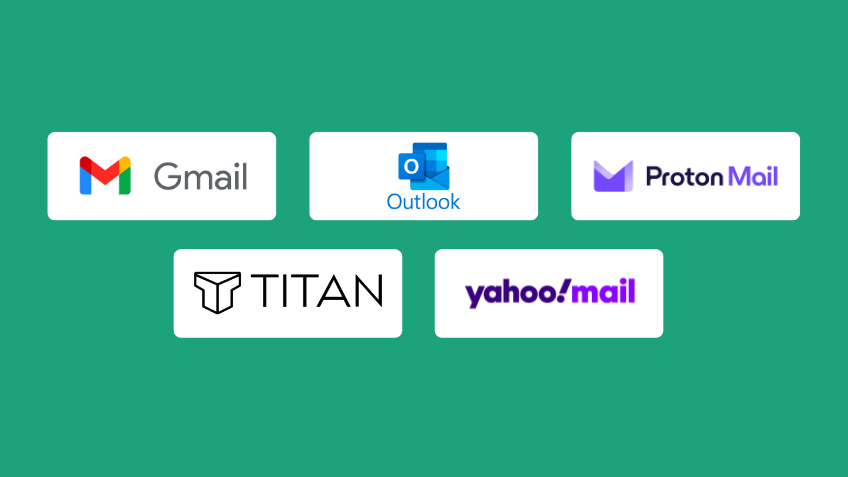
Match Your Scenario to the Right Free Email Provider Solution
There are dozens of free email providers on the internet, which makes it difficult to know where to look for your best options. If you need a personal email account, you’d look for something different than you would for a business account. Based on our research and experience, we came up with five common use cases for seeking a free email provider:
- You need a lot of storage space
- Your company emails confidential data that needs to be protected
- You want the best protection from spam and malicious emails
- You want to keep your team collaborating
- You want different email addresses for individual marketing campaigns
You need a lot of storage space
Best Option: Yahoo Mail
Yahoo Mail has an impressive 1 TB of space, even for free accounts. This amount of storage is especially helpful for businesses receiving frequent or hefty attachments or anyone needing to save their emails for a long period of time for future reference or legal reasons.
Another great choice: Gmail
Gmail has 15 GB of free space, the same as Outlook. However, Gmail has more options for upgrading in the future, if needed, with the potential for unlimited storage between Gmail and other Google Workspace tools.
If you usually run out of email storage space, consider:
- Amount of free storage: Some free email services only offer 1 GB of storage, making their free plan less valuable than others.
- Upgrade options: Research how much space a company is willing to give you if you plan on upgrading to a paid plan or adding extra storage space a la carte. For instance, some might cap their storage at 50 GB, while others offer unlimited space on select plans.
Your company emails confidential data
Best Option: Proton Mail
Proton Mail encrypts email data for all of its users. As an open-source platform, its coding is 100% transparent, so you can feel safe about what you send and receive. It also complies with Swiss privacy laws, which are some of the strictest in the world.
Another great choice: Neo
Neo also locks down email inboxes with enterprise-level encryption, real-time IP blacklist checks, and spam detection. Users can also set up two-factor authentication for extra protection.
When email security is a top priority, think about:
- Encryption: End-to-end encryption and password protection can keep any information you send safe from falling into the wrong hands.
- Filters: Look for providers with sophisticated spam detection and options to filter out junk mail, phishing attempts, and other unwanted messages.
- Secure storage: Just as sent and received emails should be encrypted, so should anything stored in your inbox or other email folders. Industry-standard encryption is 128-bit.
You want the best protection from spam
Best Option: Gmail
Gmail reigns supreme in its spam detection and blocking capabilities. This provider uses Google’s own AI-powered technology to catch about 99.9% of spam and other problematic emails. Free account holders can also set up filters to block emails with specific words, phrases, subjects, or from specific senders.
Another great choice: Neo
Neo automatically checks each incoming message for spam elements, rejecting it if it shows indications of a phishing attempt or malicious intent. Any email that Neo detects as suspicious but not automatically rejected as spam will be flagged, so you can make the final call.
If catching spam before it hits your inbox is important to you, look for:
- Spam filtering features: The best providers strike a balance between automatic email rejection and flagging potentially malicious messages so your inbox can learn what messages are and aren’t important to you (and which ones are outright dangerous).
- Configuration options: Spam filters and settings can be helpful for letting you determine what makes it through to your inbox and what gets automatically sent to a spam folder.
- Allowing and blocking emails: Many email providers let you allow and block specific email addresses to ensure you don’t miss anything important, and known junk mail senders go where they belong.
You want to keep your team collaborating
Best Option: Outlook
Outlook taps into the Microsoft suite of products, giving users access to its cloud storage, calendar, contact management, online meetings, and more. It also syncs with To Do, where your team can manage and organize their tasks in one convenient place.
Another great choice: Gmail
Like Outlook, Gmail connects to the Google family of products, including Google Drive, Calendar, and Keep. You can find easy access to connected tools on the right-hand pane of your email interface. Gmail can also boost team collaboration and productivity by syncing with tools like Zoom, Hiver, and Slack.
Teams that need help with productivity should look for an email client with:
- Meetings: In-app meetings or the ability to add an extension for video conferencing can make it easy for team members to connect.
- Calendars: Calendars within an email client can notify you when a new appointment or task is coming up from within your inbox.
- Mobile apps: Help team members stay in communication even when working remotely by using an email provider with a quality mobile app.
- Contact management: The ability to organize contacts into organizations, departments, clients, and other categories can keep team members on track with their regular communication tasks.
You want different email addresses for marketing campaigns
Best Option: Gmail
Gmail lets account holders have up to 30 email aliases for free. This can come in handy when you want a different email address for each marketing campaign to help your team keep track of and segment their communications. If you do decide to upgrade to a paid plan later, each member of your organization can have 30 aliases attached to their main account.
Another great choice: Outlook
Outlook also allows email aliases, but it has a limit of 10 per user and does not let you create multiple aliases on the same day. Still, if you’re using the feature for simple marketing campaigns, you can probably get by with the limitations.
If you want multiple email addresses under one account, consider:
- Number of email aliases: Some email providers are more restrictive than others when it comes to creating and using aliases, so be sure the one you choose doesn’t limit you too much.
- Inbox organization: The ability to create separate folders for responses you get to each email alias allows for better tracking, segmentation, and personalization when communicating with prospects or other contacts.
Free Email Provider Reviews
After analyzing more than 20 free email providers, the Quick Sprout team ultimately landed on the following five services as the best options available. Each can fit multiple needs, whether you’re looking for an email provider for personal or business use. Continue to learn what we like best about them and who can get the greatest benefits from each provider.
Gmail – Best for Simple Email Organization
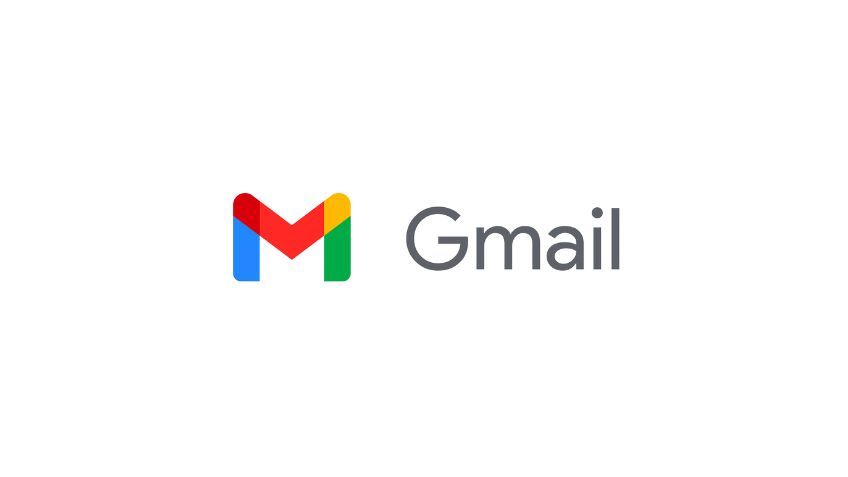
There’s a reason Gmail has been one of, if not the most popular, email providers for years: its simplicity. From its auto-sorted inbox that filters promotional messages from regular emails to its colored labeling system, there are numerous ways to set up an inbox that’s uncluttered, organized, and easy to work within.
You can use it for your business and personal email because it has everything you need from an email service in one interface. You will likely appreciate that you can also change how the interface shows your mail, like sorting by starred emails first or customizing multiple inbox sections. We recommend using the latter feature to organize your work emails, with Scheduled and Important messages at the top.
Gmail does organization exceptionally well, especially for a free email service. With its massive amount of configuration settings and add-ons for your inbox, it can transform into precisely what you need in an email provider.
What Makes Gmail Great
Gmail is super organized right out of the box, so you won’t need to do much tweaking of its settings to get a clean, user-friendly experience. It even has default spam filters to weed out junk and suspicious emails as soon as you’re registered.
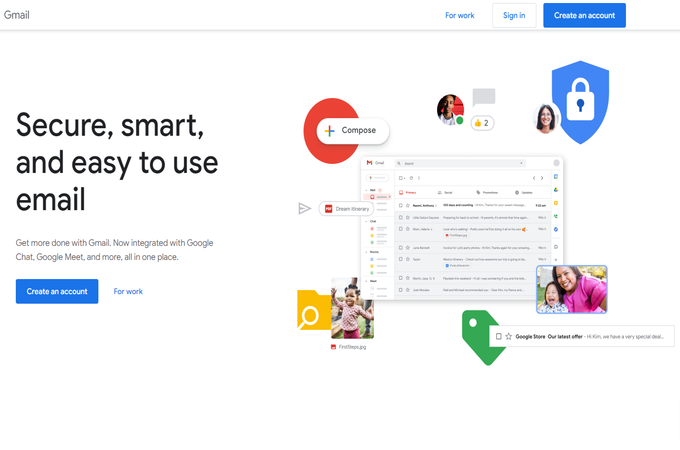
Gmail’s labels are great for customizing your inbox further to meet your needs. For instance, create labels on your personal email account for bills, family members, or communication about an upcoming vacation to easily find what you need when you need it.
When setting up your account, you can start marking important emails by clicking the flag or star icons next to each message. Over time, Gmail learns what emails are important to you and will begin automatically marking them for you, giving you yet another way to stay organized and avoid missing must-see emails.
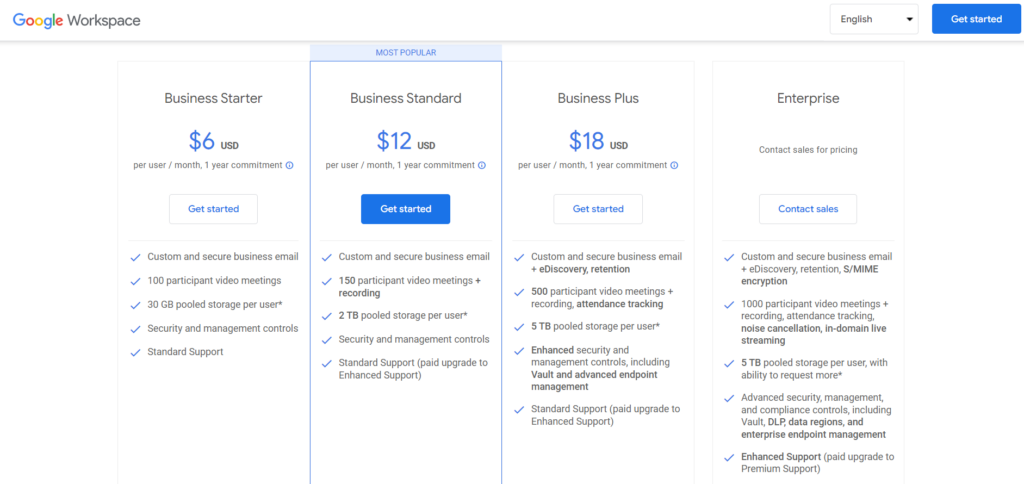
A free Gmail account gives users 15 GB of space shared between the inbox and other Google tools, like Google Drive and Google Photos. A paid plan transitions to Google Workspace for between $6 and $18 per user per month, with up to 5 TB of storage per user.
Outlook – Best for Combining Email with Productivity Tools
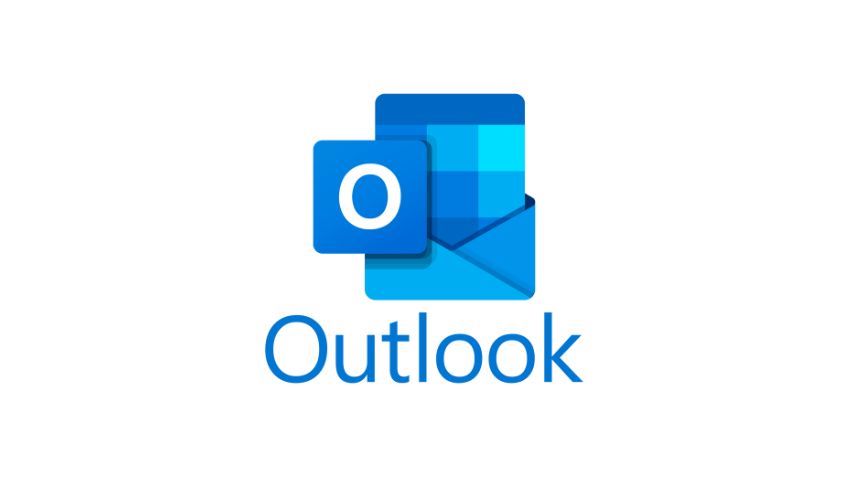
Outlook by Microsoft is an excellent option for anyone already using and familiar with other Microsoft products. Just like the company’s other tools, Outlook really moves beyond email to provide more of an all-in-one solution for collaboration and productivity.
Outlook connects with other Microsoft tools, like To Do and Skype. Plus, a calendar is built into the Outlook software, giving you quick access to switch between your email and calendar views so that messages and appointments are never out of sight.
Even more important for businesses is that Outlook keeps teams in contact with each other. Team members can tag one another in email messages or calendar invites to make sure they see essential messages and tasks. They can also send attachments from OneDrive or share OneDrive links directly in messages.
What Makes Outlook Great
Outlook makes it easy to get to any other Microsoft tools you or your team use daily, like Word, Excel, PowerPoint, and OneDrive. Icons for the most-used apps are on the left panel of the interface, or you can open the App Launcher to head to any unlisted ones.
Outlook also features productivity-focused links on the top pane of your inbox. If you added several tasks to your to-do list, you could pull them up in one spot with the ‘My Day’ feature. Or, view your OneNote feed or jump over to your next Skype meeting with one click.
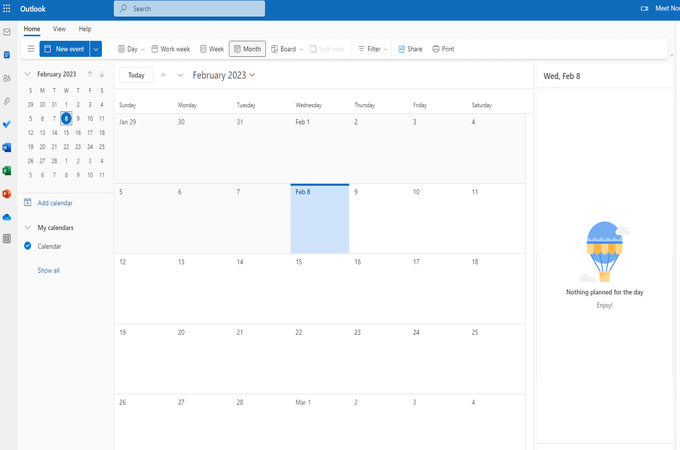
If you use Outlook for your team at work, each team member can sign up for their own free account with 15 GB of mail storage, 5 GB of OneDrive space, and access to other free Microsoft apps. An upgrade switches you to Microsoft 365 for Business, which will cost you between $6 and $22 per user per month, with up to 1 TB of storage per user, marketing tools, and cyber threat protection included, depending on the plan you choose.
Proton Mail – Best for Securing Confidential Data
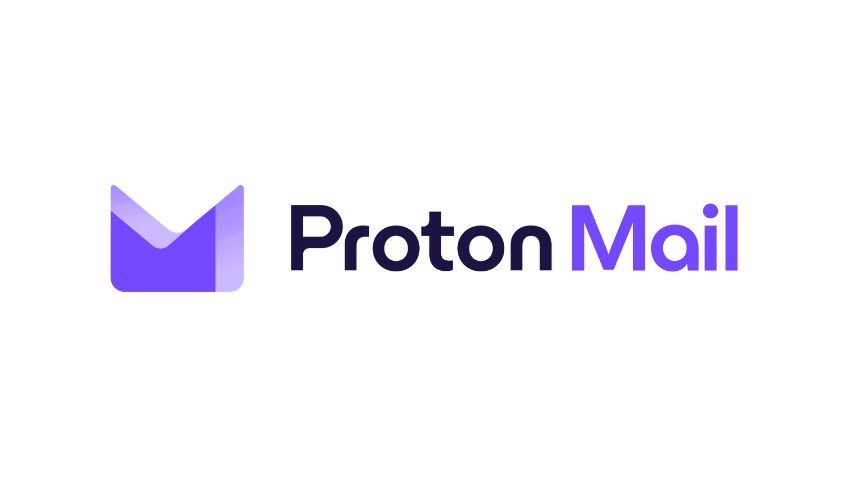
With the amount of data we send back and forth to others through email, it’s more important than ever to keep that information protected. Proton Mail is all about email security. The tool comes from Proton, the creators of a VPN service and secure cloud and calendar tools, and it offers the same line of protection for its email solution that you’d expect from such a company.
A unique feature of Proton Mail is that it uses stringent Switzerland security laws to guide its security practices. Not only do you get end-to-end encryption—protection that prevents Proton Mail and any unauthorized person from reading your emails’ contents—but you can also password-protect emails when sending them to anyone off the Proton platform.
Proton Mail really goes above and beyond the usual call for email security with additional protections, like two-factor authentication, link transparency, and built-in guards against phishing schemes. It even stops tracking codes from using your actions and preferences to use you as a target for marketing campaigns.
What Makes Proton Mail Great
We’re confident that both business and personal users of Proton Mail can see all the benefits of using an email provider that’s as locked down as this one. The tool is available on Android and iOS devices as well as the web, and each version comes with device-level security settings to bring you the most guarded email platform possible.
Proton Mail secures your messages in ways that other email providers don’t even think about, like using a secondary “onion” site—a hidden site on the web—for you to send emails through. This prevents hackers from seeing where your emails are coming from, eliminating a key vulnerability in your data and email account.
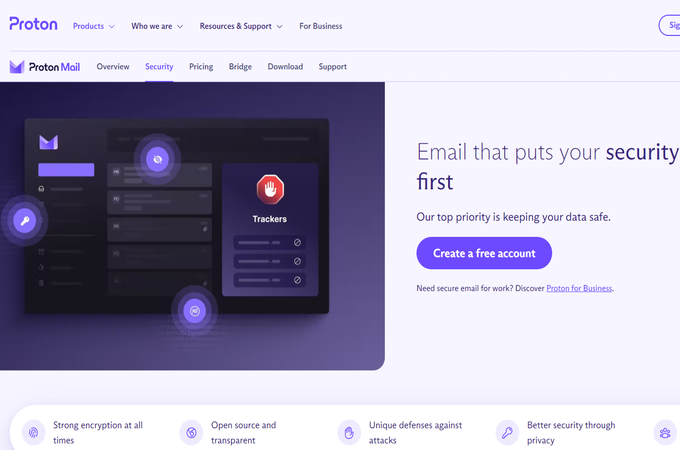
We think businesses that routinely send confidential emails will get the most value out of using Proton Mail. Since it’s an open-source platform, you can have your technical team check its coding before registering to ensure there are no potential threats to your data.
A free Proton Mail account gives you up to 150 messages per day, so if you have high-volume email needs, you might need to switch to a paid plan. These start at $0.00 (free version) per month and go as high as $29.99 per month (family version) but are lower in terms of monthly rates if you pay annually or every 24 months.
Neo – Best for Sales Teams

A few months ago, someone in our network told us about their switch to Neo and how it significantly boosted the productivity of their sales team. Neo provides quick and easy email scheduling, follow-ups, and reminders within its email platform to keep sales representatives on track with client communications.
After trying it ourselves, I see why it’s becoming popular for this purpose. First, Neo lets users create templates to save time when sending sales emails. Second, users can set reminders for themselves on an email-by-email basis to follow up after a day, three days, or whenever it makes sense for their sales funnel.
We also think Neo’s built-in email signature creator is one of the best we’ve tried. Although other services, like Gmail, let you create signatures inside their clients, Neo’s signature builder enables you to craft a professional-looking signature with several tools and settings. Plus, you can have multiple signatures to use for different purposes, which is great for contacting segmented client lists.
What Makes Neo Great
Individuals and business owners who don’t specialize in sales can still take advantage of everything Neo offers, like high-level encryption and advanced spam protection. It’s actually relatively similar to Gmail in terms of its clean user interface, email scheduling options, and mobile accessibility.
If you need to hone email communications for better customer relationships, though, Neo positively excels in this area. Its WordPress plugin lets website visitors enter their email to subscribe to your list, placing their information directly into your Neo account, turning it into somewhat of an email marketing tool, too.
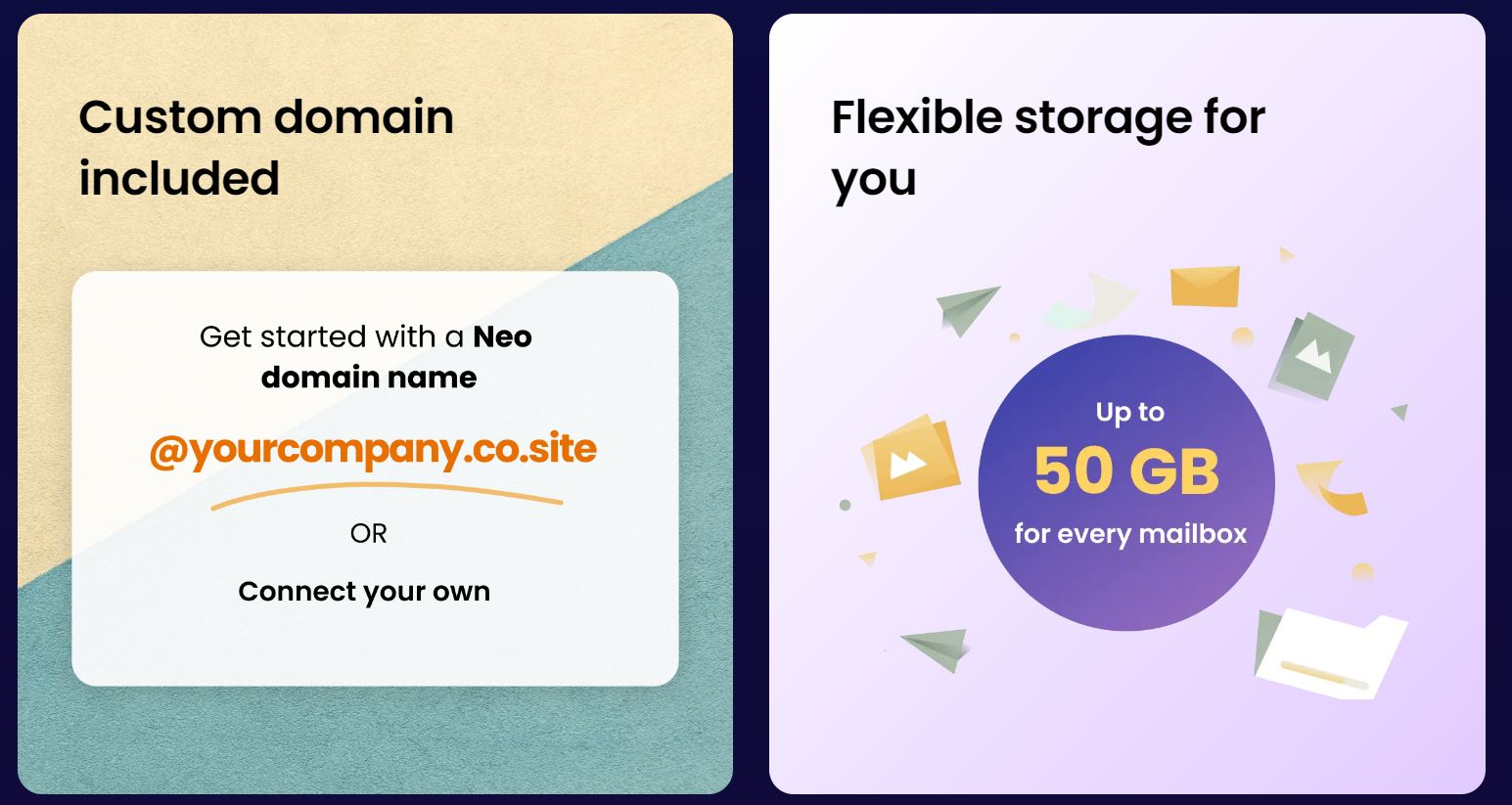
Neo also comes with vacation responders, industry-leading deliverability assurance, and the ability to create your own email rules and filters to ensure incoming emails go to the right place.
Neo requires you to have a domain, you can use your own or get a domain through Neo for free by signing up for a professional email. Some hosting providers may also offer a free plan for using Neo (NameSilo is one such domain provider), but you may need to pay for the service with other hosts.
Yahoo Mail – Best for Massive Email Storage Needs
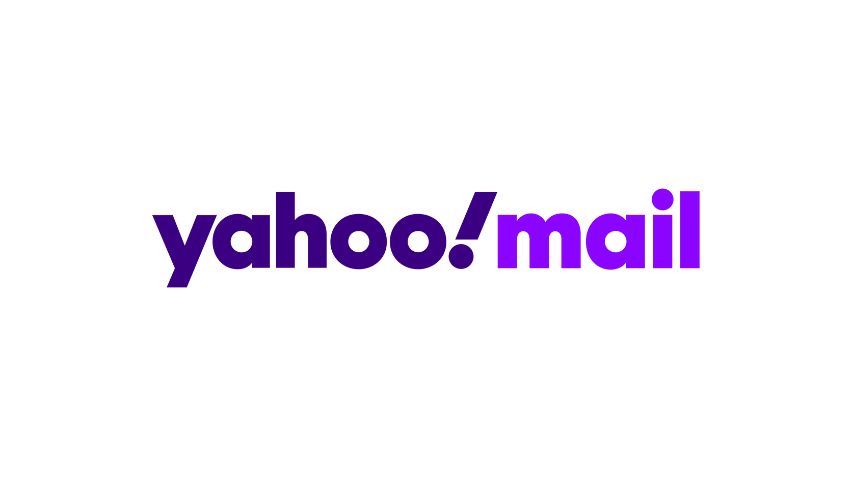
Yahoo Mail delivers 1 TB of space to everyone who signs up for one of its email accounts, even free ones. That’s significantly more than other email providers offer, especially on their free plans. For reference, our list’s next highest amount of free storage goes to Gmail and Outlook, with a comparatively meager 15 GB each.
Some people may use less than 10 GB of email storage in their entire lifetime if they only send basic emails to family and friends. Others require a lot more space if they routinely send or receive emails with attachments or need to save most emails for reference later. The heaviest storage needs are usually reserved for businesses that are constantly sending large files (such as contracts or design drafts) back and forth.
Yahoo Mail allows up to 5 TB of storage on their paid plan, so you can always expand your inbox’s storage even further if necessary.
What Makes Yahoo Mail Great
With so much space in your inbox, it could be tempting to skirt around regular inbox cleanouts to free up storage. That’s not really a problem with Yahoo Mail, thanks to its filter feature. In the settings is a filter setup to add up to 500 filters for an organized dashboard allowing you to hang onto every email you want without cluttering your primary inbox.
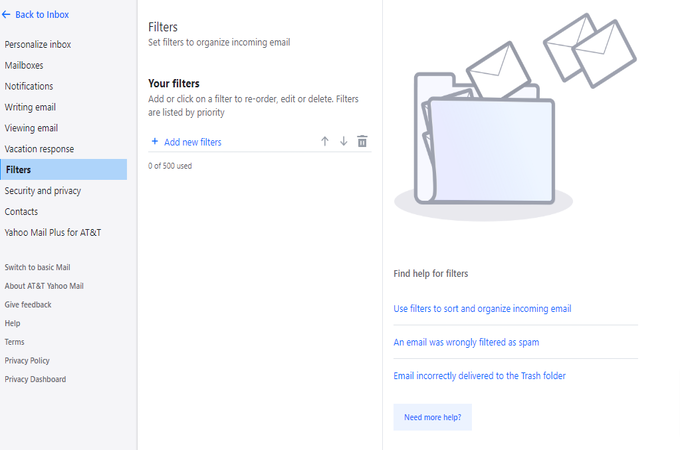
Aside from its storage capabilities, Yahoo Mail also contends with other big email players by adding a few productivity tools, like a built-in calendar and notebook. It also automatically scans incoming emails and any files you attach to outgoing emails for viruses to protect you and your recipients.
A Yahoo Mail Plus account is $5 per month for the extra storage space, an ad-free inbox, and up to 500 email aliases. If you’re considering a paid plan solely for the storage space, it could be worth it. But if you want additional email and productivity features, Outlook or Gmail might be better options.
Quick Sprout Free Email Provider-Related Content
Because there are so many free email providers on the web, we want to make sure you have all the information you need to find the best one for you. Although the five options we’ve outlined in this guide are among the best for a wide range of needs or situations, they may not fit your specific requirements. Browse the following guides to learn more about using email providers and what other products offer.
Free Email Provider Related Top Lists
The Top Free Email Providers in Summary
Several free email providers might have everything you need for quick and simple email communications. We highly recommend Gmail as an all-in-one solution for most people, whether you need an email account for business or personal use. It’s easy to organize, and its connectivity to other Google apps makes it a smart move for productivity and collaboration between teams.
Not interested in Gmail? Yahoo Mail‘s 1 TB of storage might be best for heavy email users, while Proton Mail is the top choice for a rock-solid secure email platform.
